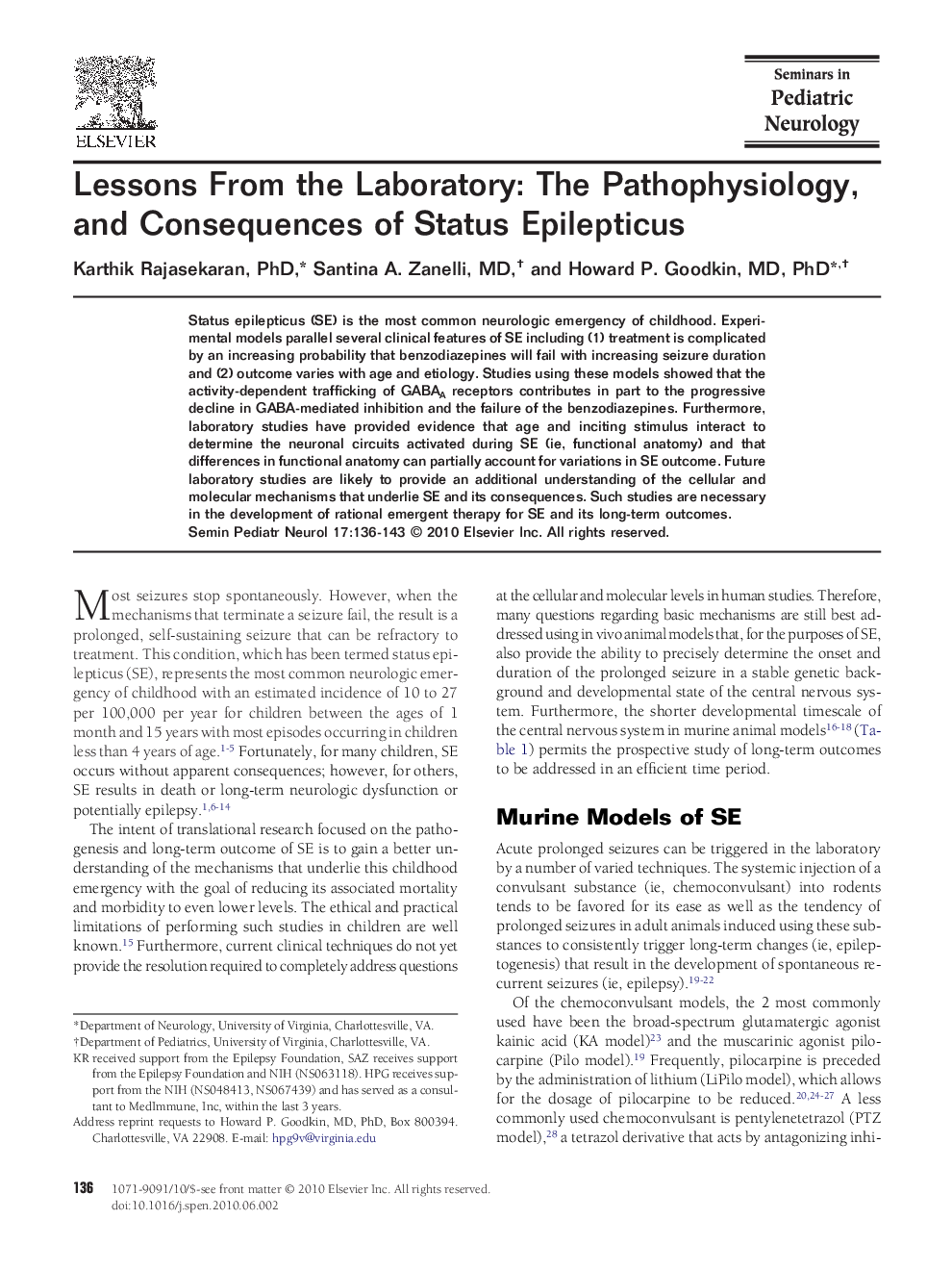| Article ID | Journal | Published Year | Pages | File Type |
|---|---|---|---|---|
| 3091228 | Seminars in Pediatric Neurology | 2010 | 8 Pages |
Status epilepticus (SE) is the most common neurologic emergency of childhood. Experimental models parallel several clinical features of SE including (1) treatment is complicated by an increasing probability that benzodiazepines will fail with increasing seizure duration and (2) outcome varies with age and etiology. Studies using these models showed that the activity-dependent trafficking of GABAA receptors contributes in part to the progressive decline in GABA-mediated inhibition and the failure of the benzodiazepines. Furthermore, laboratory studies have provided evidence that age and inciting stimulus interact to determine the neuronal circuits activated during SE (ie, functional anatomy) and that differences in functional anatomy can partially account for variations in SE outcome. Future laboratory studies are likely to provide an additional understanding of the cellular and molecular mechanisms that underlie SE and its consequences. Such studies are necessary in the development of rational emergent therapy for SE and its long-term outcomes.
